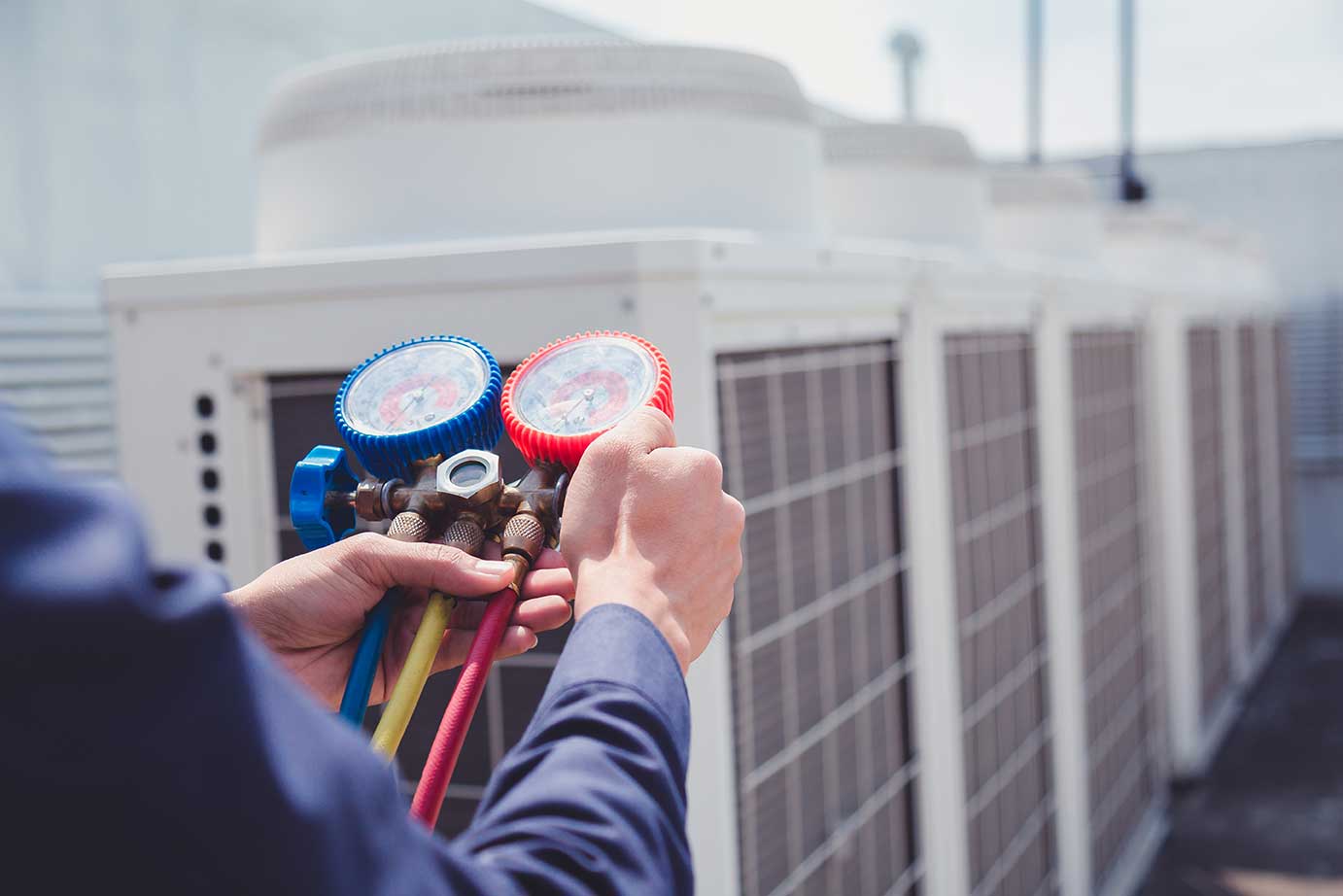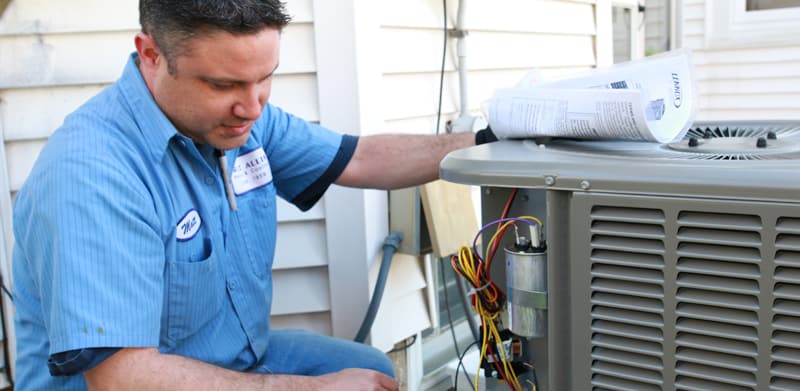Examining Your Space: Trick Measurements for Cooling Installment

If you have actually ever before found yourself in a room where the air conditioning simply couldn't seem to stay on par with the summertime warmth, you may take advantage of examining your room.
Ensuring your cooling system is effectively sized and installed needs attention to vital measurements such as area size, doors and window dimensions, ceiling elevation, insulation quality, and airflow patterns. By understanding these aspects, you can maximize your air conditioning system's efficiency and performance.
However how specifically do these dimensions impact your a/c installation?
Trick Takeaways

- Accurately gauge area dimensions for correct system capacity and airflow optimization.
- Pick energy-efficient doors and windows to boost insulation and decrease heat transfer.
- Make sure excellent air vent placement and unblocked air movement for effective cooling circulation.
- Update insulation to improve thermal resistance, seal voids, and improve total system efficiency.
Room Dimension Measurements
When gauging space dimension for air conditioning setup, ensure you precisely examine the dimensions to establish the appropriate unit ability. Beginning by considering furniture positioning within the area. Furniture can block air circulation if positioned too near to vents or the cooling system. To ensure optimal air conditioning performance, organize your furniture in a manner that promotes appropriate air flow throughout the area.
In addition, consider the space's layout and dimension when preparing for air circulation. Proper air circulation is crucial for preserving a constant temperature level throughout the space. Be mindful of any type of obstacles that can interfere with the circulation of air, such as curtains obstructing vents or huge pieces of furnishings obstructing air movement. By assuring appropriate room for air to flow easily, you can make best use of the performance of your cooling system and develop a comfy atmosphere in your home.
Window and Door Dimensions
To ensure appropriate air conditioning installation, assess the dimensions of doors and windows in the area to optimize air movement and cooling down efficiency. When evaluating doors and window dimensions, consider the following:
- Framework Compatibility: Make certain that the a/c unit you choose works with the frameworks of your windows and doors. Incorrect fit can cause air leakages and lowered power effectiveness.
- Installation: Take into consideration the installation procedure when picking a cooling device. Some systems might require particular home window measurements or added modifications for proper installment.
- Material Choice: Select windows and doors made from products that provide excellent insulation to enhance energy efficiency. Correctly insulated windows and doors can help keep a constant temperature level in the room.
- Energy Efficiency: Select energy-efficient windows and doors to lower warmth transfer and improve the general efficiency of your a/c system. Energy-efficient products can enhance the air conditioning abilities of your area while reducing energy expenses.
Ceiling Elevation Analysis
Reviewing the height of your ceiling is essential for identifying the very best positioning of air conditioning vents for reliable cooling circulation. When assessing your ceiling elevation, see to it to consider the clearance required for both the ductwork and the cooling vents. Ample ceiling clearance assurances that the ductwork can be set up effectively without any blockages, allowing for suitable air flow throughout the space.
In addition, correct clearance above the vents guarantees that the cooled down air can flow freely without any limitations, leading to more even cooling in the space.
When intending the positioning of ductwork, consider the elevation of your ceiling to stay clear of any type of issues with setup or efficiency. Appropriately located ductwork can help maximize the performance of your air conditioning system and make certain that each space obtains enough air conditioning.
Insulation Examination

Assess the insulation top quality to optimize the effectiveness of your cooling system. Appropriate insulation plays a vital function in keeping a comfortable indoor setting while maximizing power efficiency. Below are four key points to review when assessing the insulation in your space:
- Thermal Resistance: Examine the R-value of your existing insulation to make certain it satisfies the advised criteria for your area. Higher thermal resistance suggests better insulation high quality, which helps in reducing heat transfer and preserving a constant temperature.
- Insulation Placement: Check the positioning of insulation throughout your space, focusing on locations such as wall surfaces, ceilings, and floorings. Effectively mounted insulation stops power waste by reducing heat exchange with the surrounding atmosphere.
- Sealing Voids: Identify and seal any spaces or fractures in the insulation to stop air leakage. Properly sealed insulation improves power efficiency by preserving impermeable barriers that prevent conditioned air from getting away.
- Updating Insulation: Consider updating your insulation to more recent, a lot more energy-efficient materials. Updating can boost thermal resistance, reduce power usage, and improve the total performance of your a/c system.

Airflow Evaluation
Inspecting the air flow within your area is important for making sure peak efficiency of your air conditioning system. Appropriate air movement circulation is important to maintain constant temperatures throughout the location. When examining air flow, consider the air flow demands of each room to ensure ample air blood circulation.
To assess air flow distribution, beginning by looking for any blockages such as furnishings obstructing vents or particles blocking air ducts. Poor airflow can lead to ineffective air conditioning and heating, causing pain and enhanced energy expenses. It is necessary to address any problems immediately to enhance the efficiency of your a/c system.
Furthermore, recognizing the air flow needs of various areas in your house or workplace is key to maintaining air quality and convenience degrees. Proper ventilation assists get rid of stale air, smells, and pollutants while generating fresh outdoor air. By examining air movement and air flow demands, you can produce an extra comfy and healthy indoor setting for everyone.
Frequently Asked Inquiries
Just How Can I Identify the very best Place for My Air Conditioning System Within the Room?
When figuring out the best spot for your air conditioning system in an area, think about the air conditioning capacity and air flow. Keep the unit far from barriers that can obstruct air movement and area it centrally in the area to ensure also cooling down.
Perfect placement aids distribute trendy air effectively, maximizing the system's performance. Appropriate positioning can make a significant difference in exactly how effectively your a/c unit cools down the area.
Exist Any Type Of Certain Factors to Take Into Consideration When Setting Up an A/c Device in a Multi-Level Building?
When installing a cooling system in a multi-level structure, think about variables like power efficiency, cooling down ability, positioning, and ease of access.

Make certain the system is strategically put to cool several levels efficiently. Opt for an area that permits very easy access for repair and maintenance.
Furthermore, review the cooling ability to make certain it can sufficiently cool down the entire building. These factors to consider will certainly assist optimize the performance of your air conditioning system in a multi-level setting.
What Is the Perfect Distance Between the Cooling Unit and Any Kind Of Heat-Producing Appliances in the Room?
When positioning your a/c unit, make sure appropriate air flow range from heat-producing devices in the space. This aids with warmth dispersion and stops the AC from functioning more challenging to cool down the area.
Go for a suitable range of at least 3 feet between the air conditioning system and any type of warmth resources like stoves or lights. Keeping this separation will maximize the efficiency of your a/c system and prolong its life-span.
Are There Any Kind Of Potential Dangers That I Should Be Aware of When Setting Up a Cooling System in a Tiny or Encased Area?
When setting up an a/c device in a tiny or encased room, bear in mind prospective risks. Make sure to deal with ventilation problems to prevent air high quality problems. Take security preventative measures seriously, especially with restricted room restraints.
Be aware of setup obstacles like appropriate positioning for finest performance. Focus on safety and security and make certain your space is well-ventilated to avoid any kind of threats related to installing an a/c device in a confined area.
How Can I Guarantee Proper Ventilation for My Air Conditioning Unit to Operate Effectively in a Space With Limited Airflow?
To enhance airflow for your cooling device in a space with restricted airflow, guarantee proper air flow by keeping vents clear and unobstructed. ac not cooling
Frequently tidy or replace air filters to maintain efficiency.
Consider making use of a fan to aid circulate air and protect against stationary pockets.
Setting the system in a place where air can move freely, avoiding cramped areas.
These actions will help your a/c unit run effectively and cool the area successfully.
Verdict
Now that you have taken key measurements for your a/c installment, you're one action better to making sure peak air conditioning performance in your space.
By precisely reviewing area dimension, window and door measurements, ceiling elevation, insulation, and airflow, you can make educated decisions on the most effective air conditioner device for your needs.
Keep in mind, appropriate dimensions are necessary for a successful and reliable air conditioning setup.
